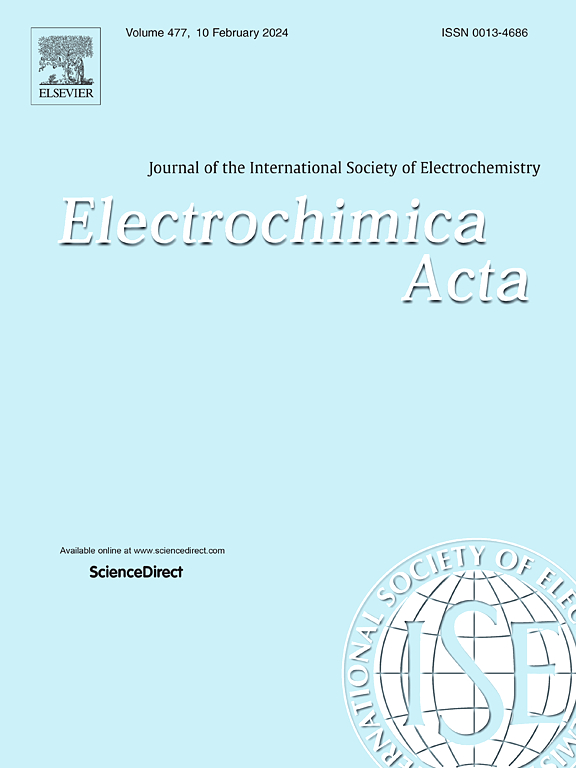用胸腺嘧啶-汞碱基对形成法检测垂汞电极表面DNA寡核苷酸中的胸腺嘧啶
IF 5.6
3区 材料科学
Q1 ELECTROCHEMISTRY
引用次数: 0
摘要
胸腺嘧啶-汞-胸腺嘧啶碱基对是DNA中金属离子介导的相互作用的一种很好的描述类型,经常用于构建用于汞检测的生物传感器。在这个工作我们利用这种交互学习的行为thymine-containing oligodeoxynucleotide (ODN)层表面吸附悬汞电极(HMDE)下降,而作为源的汞离子在应用温和积极的潜力(+ 0.15 V)。我们确认形成thymine-mercury复杂的表面通过观察一对氧化还原峰HMDE胸腺嘧啶的特定依赖存在的汞在ODNs延伸。单磷酸脱氧胸腺嘧啶或三磷酸脱氧胸腺嘧啶由于汞-胸腺嘧啶络合物而发出的信号要弱得多。我们证实了络合物的形成可以引起AT双链的解绕,并得出结论,这种方法可以用于观察同胸腺嘧啶ODN从HMDE表面的解吸。此外,我们能够在来自不同端粒重复序列的odn中检测到少至三个胸腺嘧啶的块。本文章由计算机程序翻译,如有差异,请以英文原文为准。


Detection of thymine stretches in DNA oligonucleotides at the surface of hanging mercury drop electrode using thymine-mercury base pair formation
Thymine-mercury-thymine base pair is a well described type of metal ion-mediated interaction in DNA, with a frequent use in construction of biosensors for mercury detection. In this work we took advantage of this interaction to study behavior of thymine-containing oligodeoxynucleotide (ODN) layers adsorbed on the surface of hanging mercury drop electrode (HMDE), which served as a source of mercury cations upon applying a mildly positive potential (+0.15 V). We confirmed formation of the thymine-mercury complex at the surface of HMDE by observing a pair of redox peaks specific for mercury in dependence on presence of the thymine stretches in ODNs. Deoxythymidine mono- or triphosphate gave much weaker signals due to the mercury-thymine complexes. We confirmed that the complex formation can cause unwinding of the AT duplex and concluded that this approach can be used to observe desorption of the homothymine ODN from the HMDE surface. Moreover, we were able to detect stretches of as little as three thymines in ODNs derived from different telomeric repeat sequences.
求助全文
通过发布文献求助,成功后即可免费获取论文全文。
去求助
来源期刊

Electrochimica Acta
工程技术-电化学
CiteScore
11.30
自引率
6.10%
发文量
1634
审稿时长
41 days
期刊介绍:
Electrochimica Acta is an international journal. It is intended for the publication of both original work and reviews in the field of electrochemistry. Electrochemistry should be interpreted to mean any of the research fields covered by the Divisions of the International Society of Electrochemistry listed below, as well as emerging scientific domains covered by ISE New Topics Committee.
 求助内容:
求助内容: 应助结果提醒方式:
应助结果提醒方式:


